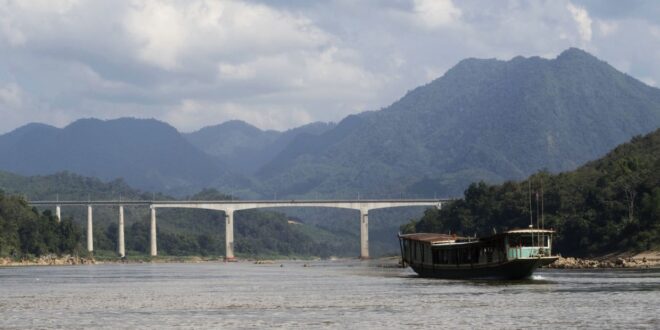HANOI: The Mekong Delta is the largest rice production area in Vietnam, but adverse impacts from natural and human-induced changes in the Mekong River have led to growing concerns over water security in the region.
With nearly 95% of the river’s flow in the country coming from abroad, the Cuu Long (Mekong) Delta is vulnerable to environmental changes across the region, and especially from hydropower development in the river’s upstream area, according to the deputy chief of the Standing Office of the Vietnam Mekong River Commission Nguyen Hong Phuong.
The acceleration of these hydropower and irrigation projects for socio-economic goals has resulted in abnormal flow fluctuations and rapidly decreasing silt, sand and nutrients in the delta in Vietnam.
These unusual phenomena have become more frequent and have had adverse impacts in the area, including extreme effects of floods and droughts, stronger saline intrusion, degrading ecological environment and aquatic resources, as well as increasing coastal erosion.
Not only are water-related economic activities affected, but also the livelihoods of millions of locals, most of whom are in poverty and dependent on resources from the Mekong River.
Phuong added that statistics from 2010 till the present also showed that the area’s average rainfall in the dry season dropped by 10% to 30%, thereby reducing the dry season flow by 5% to 10%.
Severe droughts were recorded in 2016 and 2020. Coupled with rising sea levels, these resulted in serious saline intrusion that encroached 20km to 25km deeper into the river compared with the average, she added.
This phenomenon cost Vietnam’s Mekong Delta approximately 5.5 trillion dong in 2015 to 2016.
Director of the National Centre for Hydrometeorological Forecasting Mai Van Khiem also warned that El Nino is expected to affect the region from January to February this year with a probability of over 95%.
This figure will then decrease to around 60% to 85% from March to May.
The Mekong Delta is likely to experience drought, water shortage and saline intrusion during the dry season in 2024, he said.
“If saline intrusion lasts longer with a high level of salinity, areas along the Tien and Hau rivers in Vinh Long, Can Tho, Ben Tre and Tien Giang might witness drought and saline intrusion in their rice fields and fruit orchards,” he added, recommending that farmers prepare response plans and be proactive in facing the situation.
Khiem suggested that Mekong Delta areas must prepare specific plans and solutions to mitigate saline intrusion earlier and more thoroughly.
This is to ensure the water volume for rice production in the winter-spring crop and minimise damage caused by drought and salinity, he said.
Following the prime minister’s direction, the Natural Resources and Environment Ministry is requiring more frequent forecasts on El Nino, rainfall and river flows from hydrometeorological departments and related agencies.
Phuong also emphasised the necessity of a comprehensive strategy to ensure water security in the Mekong River Basin and particularly the Mekong Delta.
This includes preferential policies for investment and effective use of water, measures to protect and develop water sources, and establishing operating procedures for multi-purpose irrigation infrastructure. — Viet Nam News/ANN
 BeritaKini.biz Berita Viral Terkini di Malaysia
BeritaKini.biz Berita Viral Terkini di Malaysia





